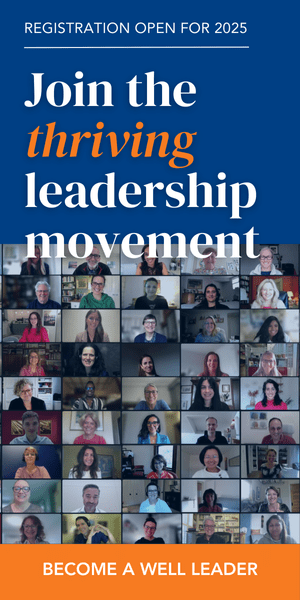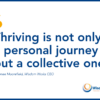We humans have a superpower at our disposal: Our magnificent ability to learn.
 In the simplest terms, learning means embodying a new capacity to think and act. Consider, for example, that you want to eat a plant-forward diet to enhance your physical health and the health of the planet, like a third of the world’s population currently does. A good start may be to understand that consuming less meat decreases the risk of heart disease, stroke, high blood pressure, type 2 diabetes, as well as other lifestyle diseases and climate impacts. However, knowledge alone won’t get you to your wellness goals. You’ll have to change your behavior from what it is today to what you want it to be.
In the simplest terms, learning means embodying a new capacity to think and act. Consider, for example, that you want to eat a plant-forward diet to enhance your physical health and the health of the planet, like a third of the world’s population currently does. A good start may be to understand that consuming less meat decreases the risk of heart disease, stroke, high blood pressure, type 2 diabetes, as well as other lifestyle diseases and climate impacts. However, knowledge alone won’t get you to your wellness goals. You’ll have to change your behavior from what it is today to what you want it to be.
Learning can transform new behaviors into authentic wellness lifestyles and connections into supportive wellness communities. When it comes to wellbeing leadership, a great question to ask is: How can I help myself and others learn?
Some habits serve our wellbeing. Some habits erode it.
Fortunately, you aren’t a fixed human being, reduced to your habits. You are a human becoming with a built-in capacity to learn. Your brain possesses neuroplasticity by design. It is adaptable and responsive to your inner and outer worlds with a structure and function that can evolve. The latest studies show that “the adult brain is far more fertile than expected and more than capable of sprouting the connections necessary for profound learning,” even for the eldest among us.
Put the capacity to learn into action.
As a leader, how can you help yourself and others learn to make wellness a priority? Try these suggestions with your team or organization, as well as yourself:
- Help others tap into their potential to learn. People often feel stuck because they forget they are hard-wired to adapt and evolve. Assist them in using the same cue-craving-response-reward feedback loop that’s the backbone of every habit to break the habit cycle. And ask these questions to help them transition to a new wellness behavior:
– How can you make this behavior obvious?
– How can you make this behavior attractive?
– How can you make this behavior easy?
– How can you make this behavior satisfying? - Turn a wellbeing experiment into a habit. Research shows that simple, intentional, positive activities, such as a daily dose of gratitude or wonder, will increase your wellbeing. Choose an action you’ve experimented with that supports your wellbeing. Then ask yourself, how can I incorporate this experiment into my lifestyle? (This excellent research by psychologists Dr. Sonja Lyubomirsky and Kristin Layous offers pointers about how to make positive activities most beneficial for you.)
- Make wellness the core of your identity. Learning can be a pathway to wellness, to be sure, but it isn’t just about adopting a new behavior or mindset. Ultimately, it’s about creating who you want to be. Too many leaders still see wellness as an afterthought rather than the core of how they live and lead. Spend time exploring this question on your own or with a trusted person, such as a mentor or executive coach: How is health and wellbeing part of my narrative of who I am—and who I want to become? You may be surprised at the new and healthier direction you choose to take for your life and work.
This is an excerpt from the September Wellness Moonshot, which is curated and developed by Renee Moorefield for the Global Wellness Institute. Read the full article here: September Wellness Moonshot :: LEARN






